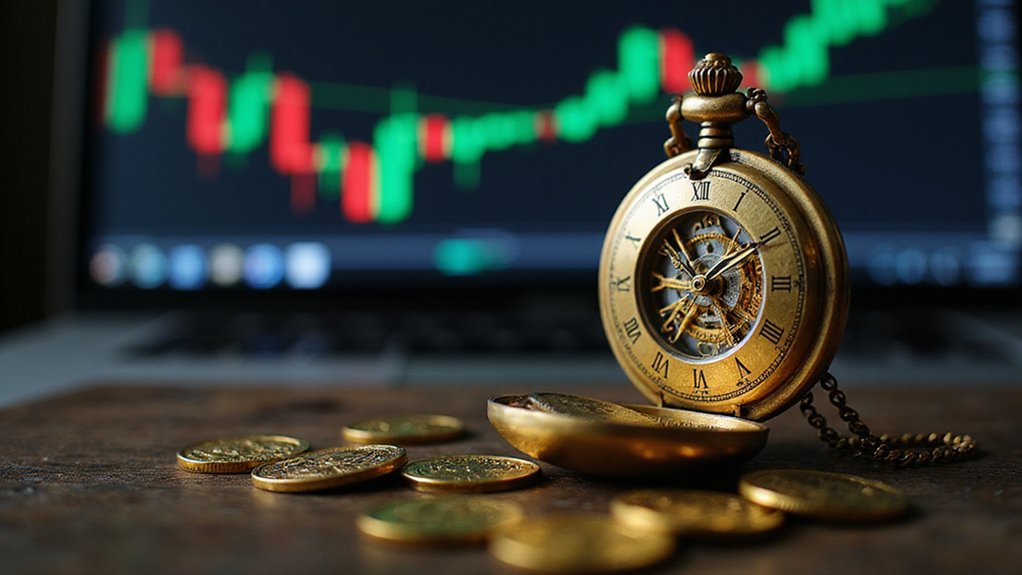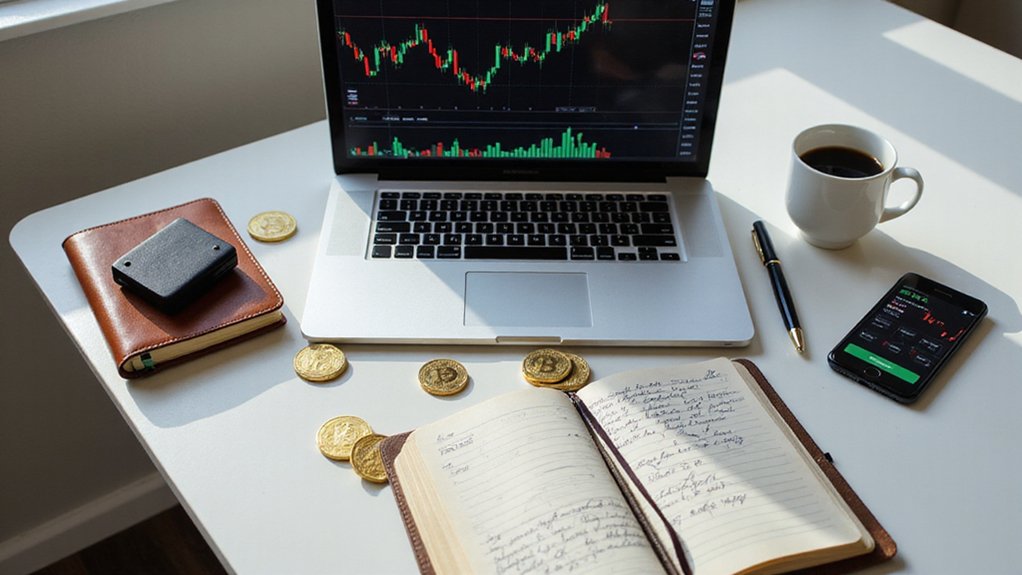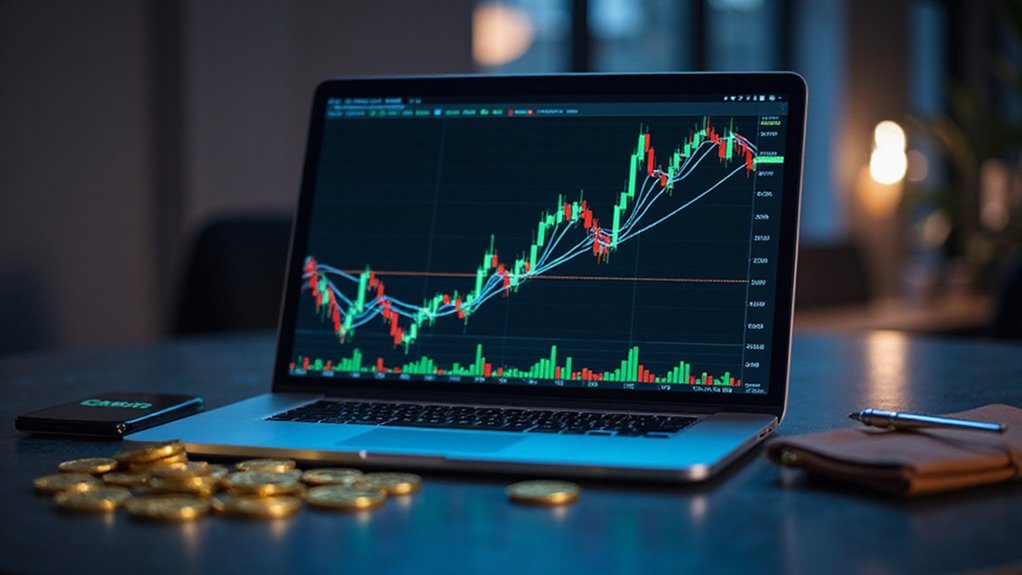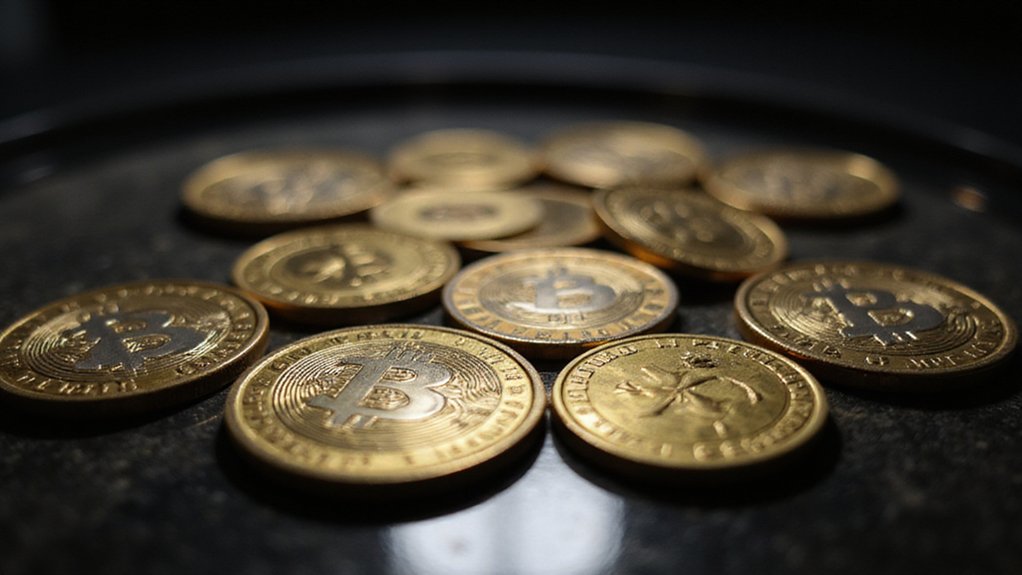A decentralized exchange (DEX) operates as a peer-to-peer trading platform where smart contracts automatically execute cryptocurrency transactions without traditional intermediaries holding user funds. Traders connect their wallets directly to DEX interfaces, maintaining control of private keys while blockchain technology records every transaction transparently. Unlike centralized exchanges prone to custodial risks, DEXs use liquidity pools and automated market makers to determine prices algorithmically—though understanding their broader implications requires examining their revolutionary impact on financial infrastructure.

A decentralized exchange (DEX) represents perhaps the most philosophically pure expression of cryptocurrency’s founding ethos—the elimination of middlemen who, despite their protestations of indispensability, have historically demonstrated a remarkable talent for losing, stealing, or simply misplacing other people’s money.
These peer-to-peer marketplaces allow cryptocurrency traders to conduct business directly through blockchain technology and smart contracts, bypassing the custodial arrangements that have proven so spectacularly fallible in traditional finance.
The operational mechanics reveal an elegant simplicity that belies their sophistication.
The most revolutionary technologies often disguise their complexity behind deceptively simple interfaces that even regulators might accidentally comprehend.
Smart contracts automatically execute trades when predetermined conditions are met, functioning as digital escrow agents that never actually gain custody of user funds.
Traders connect their wallets to DEX interfaces—accessible through web portals or mobile applications—while retaining complete control over their private keys throughout the entire transaction process.
The blockchain records every trade transparently, creating an immutable audit trail that would make traditional brokerages weep with envy (assuming they possessed the capacity for such introspection).
This architecture contrasts sharply with centralized exchanges, which operate more like traditional brokerages—complete with the accompanying risks of custodial control, regulatory vulnerability, and the occasional spectacular implosion that leaves traders staring at empty accounts while executives mumble about “unforeseen circumstances.”
DEXs eliminate these counterparty risks by ensuring that users never relinquish control of their assets, even during active trading.
The landscape encompasses various implementations, from Uniswap’s automated market maker model to PancakeSwap’s Binance Smart Chain integration.
Many employ liquidity pools rather than traditional order books, allowing users to trade against algorithmically managed reserves rather than directly with other traders. These pools enable permissionless trading through automated market makers that use mathematical formulas to determine prices based on the ratio of assets within each pool.
These platforms typically operate as open-source, permissionless protocols where anyone can create liquidity pools or list tokens—a democratization of market-making that traditional exchanges find simultaneously threatening and incomprehensible.
As fundamental DeFi infrastructure, DEXs enable composability with other protocols, creating financial legos that snap together in ways that would require armies of lawyers and regulators in traditional finance. Unlike their centralized counterparts that frequently impose daily trading limits and restrict asset selection, decentralized exchanges provide unlimited volume capacity and broader token accessibility.
They represent not merely technological innovation, but a philosophical statement about who should control financial infrastructure—a question that becomes increasingly relevant as traditional institutions continue their impressive demonstration of systemic unreliability. The sector’s remarkable expansion becomes evident when considering that DEXs captured 14% of global cryptocurrency trading volume by August 2023, a dramatic surge from a mere 0.11% in January 2019.
Frequently Asked Questions
What Are the Main Risks of Using Decentralized Exchanges?
DEX users face a quartet of interconnected risks that would make traditional exchange operators break into cold sweats.
Smart contract vulnerabilities can drain wallets faster than Vegas slot machines, while thin liquidity creates slippage that transforms profitable trades into expensive lessons.
Regulatory uncertainty looms like an unpredictable sword, and market manipulation thrives in environments where front-running miners treat pending transactions like insider information at a poker table.
How Do Gas Fees Work on Decentralized Exchanges?
Gas fees on DEXs function as computational pricing mechanisms, calculated through base fees, priority fees, and gas units consumed during smart contract execution.
Ethereum-based platforms like Uniswap impose fees ranging $5-25 per transaction, fluctuating with network congestion and transaction complexity.
Users pay these costs alongside trading fees—a delightful double taxation scenario.
Alternative blockchains like Polygon offer lower fees, though this hardly eliminates the fundamental inefficiency of paying premiums for decentralized trading privileges.
Can I Use Decentralized Exchanges Without Connecting a Wallet?
No, one cannot use decentralized exchanges without connecting a wallet—it’s rather like attempting to shop without bringing money.
DEXs execute trades directly from users’ non-custodial wallets through smart contracts, making wallet connectivity fundamental to their architecture.
Unlike centralized platforms that hold funds internally, DEXs require continuous wallet interaction for transaction signing and fund access.
Without this connection, users can browse interfaces but cannot execute any trading functions whatsoever.
Which Cryptocurrencies Can I Trade on Decentralized Exchanges?
DEXs support thousands of cryptocurrencies, though availability depends on the specific platform and blockchain.
Uniswap trades over 1,400 tokens across multiple networks, while PancakeSwap focuses on BEP-20 tokens.
Ethereum-based DEXs primarily handle ERC-20 tokens, Solana platforms trade SPL tokens, and specialized exchanges like Curve target stablecoins.
The breadth is impressive—assuming one can navigate the maze of blockchain compatibility without accidentally sending tokens into digital oblivion.
How Do I Recover Funds if a Transaction Fails?
When transactions fail on DEXs, recovery options remain frustratingly limited—blockchain explorers can identify issues, while cross-chain bridges might retrieve assets sent to wrong networks.
Exchange support occasionally assists with funds mistakenly sent to centralized platforms.
However, the immutable nature of blockchain transactions (that supposed feature, not bug) means most failed transactions simply vanish into the digital ether, underscoring why double-checking addresses isn’t merely suggested—it’s absolutely essential.









